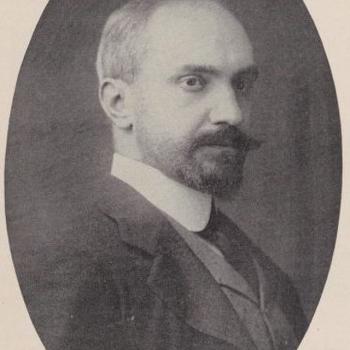It’s called centering prayer and it’s a method of prayer that comes out of an ancient Christian contemplative tradition. It dates all the way back to a 14th century text titled The Prayer of Unknowing. And for over 500 years, it fell out of favor with the Roman Catholic church, until it resurfaced thanks to one Father Thomas Keating.
In the 1970s, Keating (still alive and praying at age 95) saw that the church was losing vast amounts of young members to Eastern religions, drawn by the allure of meditation. He was aware that the church once had its own form of meditation known as centering prayer. So, with help from a few cohorts, he took it upon himself to promote centering prayer once again. He spread the word far and wide through lectures and books like Intimacy with God, An Introduction to Centering Prayer.
How does centering prayer, which is also known as contemplative prayer, work? Let me give you a guide that was created by Thomas Keating himself. Much like meditation, it’s recommended that you practice centering prayer for about 20 minutes a session, twice a day. And like meditation, a short session is better than no session.
The 4 Steps of Centering Prayer
- Choose a sacred word as the symbol of your intention to consent to God’s presence. Invite God within.
- Sitting comfortably with eyes closed, settle briefly and silently introduce the sacred word as the symbol of your consent to God’s presence.
- When you become aware of thoughts, silently return ever so gently to the sacred word.
- At the end of the prayer period, remain in silence with eyes closed for a couple of minutes.
Now as a practitioner of centering prayer myself, I want to let you in on a few additional pointers that come from both me and the writings of Keating:
- While meditation has the mantra, centering prayer has “the sacred word”. I will admit I cheat a little and actually use three words: Rest in God. It’s a constant reminder of the action I want to take.
- You don’t have to repeat the sacred word or phrase continuously, it’s merely a way to maintain your intention of faith and bypass the thinking process.
- Let your thoughts go by “like boats on the surface of a river.” Pay no attention to them, “it’s like noise in the street or music in the supermarket.”
What makes centering prayer a better version of meditation?
According to Keating, the Eastern traditions put a great emphasis on what the self can do and as a result “contain the innate hazard of identifying the true self with God. The Christian tradition, on the other hand, recognizes God as present but distinct from the true self.”
In other words, centering prayer adds God to the equation. Keating points out that it can be easy to forget the presence of God. What centering prayer does is allow us to “sense God’s presence and eliminate the feeling that God is absent.” He believes this act “furthers our spiritual journey” as it makes us aware of the Divine indwelling at the core of our being. This Divine force is available to us anytime, anywhere, 24 hours a day.
Keating believes that when we practice centering prayer on a regular basis, “a different kind of knowledge rooted in love emerges, in which the awareness of God’s presence supplants the awareness of our own presence.” He sums up the effects of centering prayer this way:
(Centering prayer) is the opening of mind and heart—our whole being—to God beyond thoughts, words and emotions. We open our awareness to God, who we know by faith is within us, closer than breathing, closer than thinking—closer than consciousness itself.


















